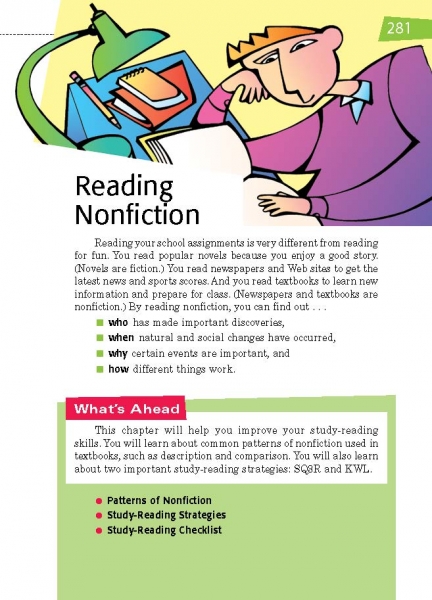Page 281 from

Start-Up Activity
Display the term nonfiction and ask a volunteer to define it. Then, have students identify examples of nonfiction. (Examples: Manuals, textbooks, Web sites, newspapers, etc.) Next, refer them to a page in a textbook or to a Web site and ask them why reading a page like this is important (to gain information) and what makes it challenging (so many facts and details, new words, etc.). Point out that this chapter provides strategies to help students read nonfiction more effectively. Have a volunteer read the opening page aloud.
Think About It
“A nonfiction writer is a storyteller who has taken an oath to tell the truth.”
—Russell Freedman

Start-Up Activity
Display the term nonfiction and ask a volunteer to define it. Then, have students identify examples of nonfiction. (Examples: Manuals, textbooks, Web sites, newspapers, etc.) Next, refer them to a page in a textbook or to a Web site and ask them why reading a page like this is important (to gain information) and what makes it challenging (so many facts and details, new words, etc.). Point out that this chapter provides strategies to help students read nonfiction more effectively. Have a volunteer read the opening page aloud.
Think About It
“A nonfiction writer is a storyteller who has taken an oath to tell the truth.”
—Russell Freedman





